Blog
27 November 2024
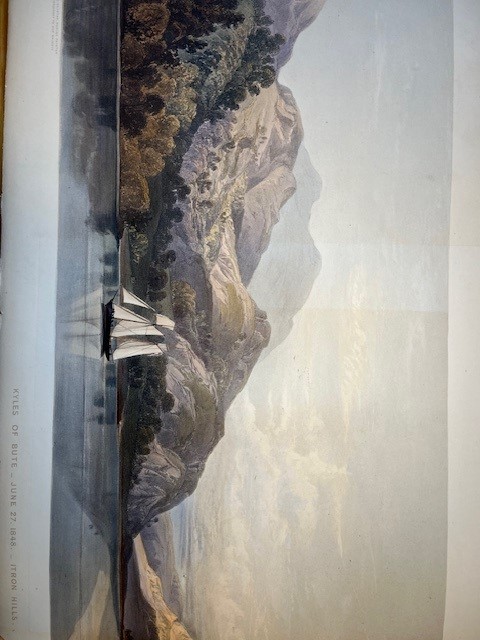
‘Kyles of Bute’, in J. C. Schetky and Lord John Manners, ‘A Cruise in Scotch Waters’ (1850)
Just before St Andrew’s Day seems an apt moment to explore depictions of Scotland’s scenery in Emmanuel’s collection of illustrated books. The transformation in taste has often been described, in which those upland parts of Britain that had previously been viewed as ugly and terrifying in their barrenness and isolation became venerated as sites of the picturesque and the sublime. That only a very selective glimpse can be provided here of all the images of Scotland’s mountains and coasts in the College’s Graham Watson Collection makes its own point about a developing admiration, in which its scenic beauty is a key part of modern perceptions of Scotland.
Even a volume presenting fine panoramas of Scottish cities and towns will necessarily include picturesque prospects, as in this view of Melrose in the Borders.
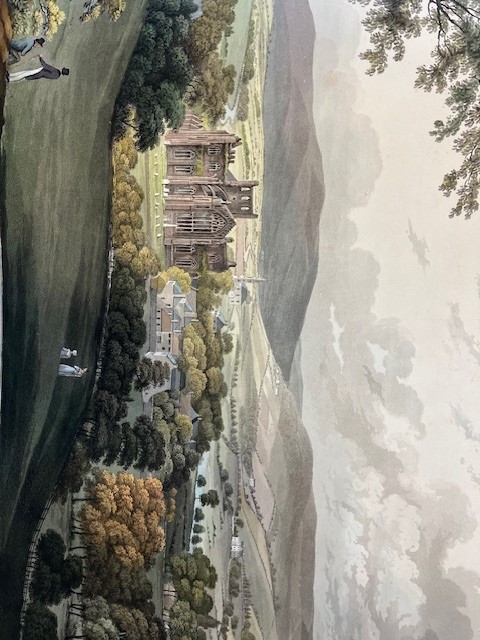
J. Clark, ‘Views in Scotland’ (1824-25). Now a very rare book, with 32 splendid plates
When it comes to depictions of Highland landscape, these tend to allow vastness its fullest measure by placing the viewpoint of the picture on the valley floor, surrounded and towered over by mountains.

‘In Glen Nevis’, in Schetky and Manners, ‘Scotch Waters’. This book is illustrated with fine hand-coloured lithographs
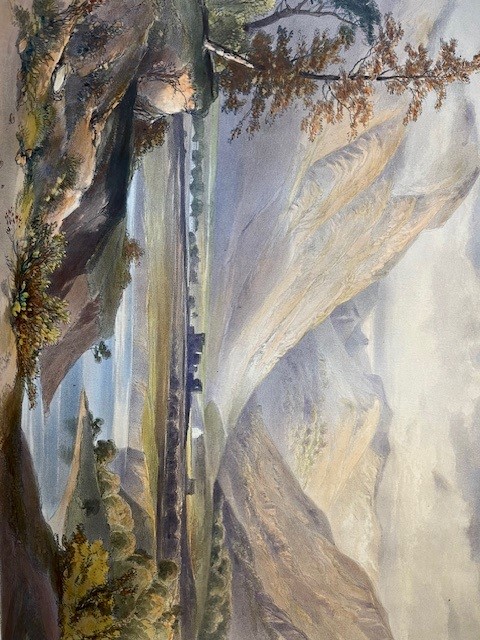
‘Inverlochy Castle, by Fort William’, in Schetky and Manners, ‘Scotch Waters’
Some of these towering mountains rise with jagged dark peaks seen against the sky. Expanses of water are frequently emphasized, on which boats look like toys in the shadow of the mountains.
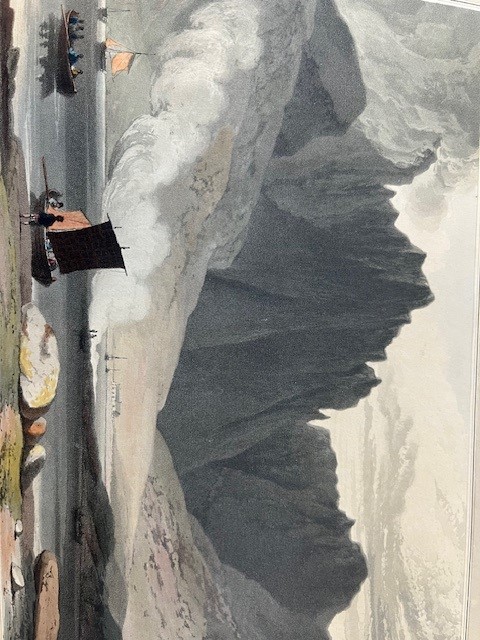
‘The Coolin from Loch Slapin, Skye’, in William Daniell, ‘A Voyage round the North and North West Coast of Scotland’ (1820)
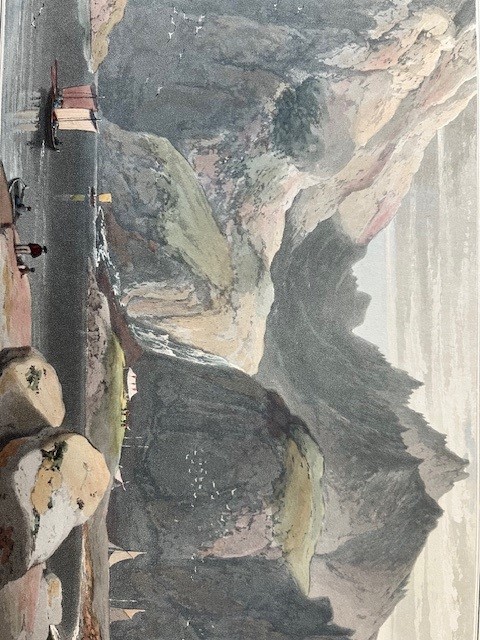
‘Loch Scavig’, in Daniell, ‘Voyage’
Both uses of colour and absence of colour underline the stark strangeness of some of the formations depicted.
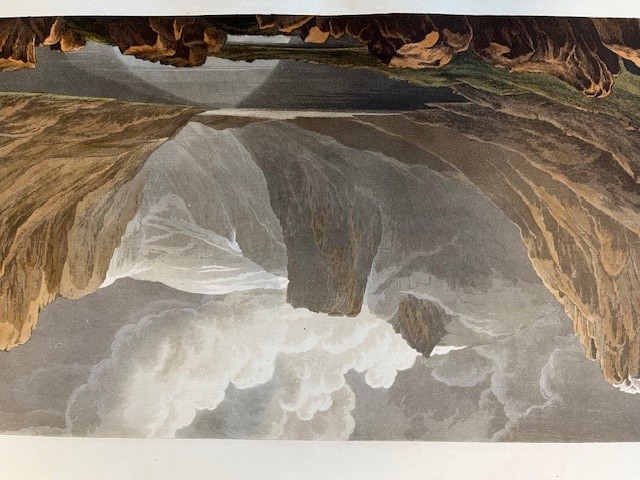
‘Loch Avon, in G. F. Robson, ‘Scenery of the Grampian Mountains’ (1819). Robson’s original sketches survive for the plates in this book. Engraved by Henry Morton, the plates were ‘coloured from original drawings made on the spot by the author’.
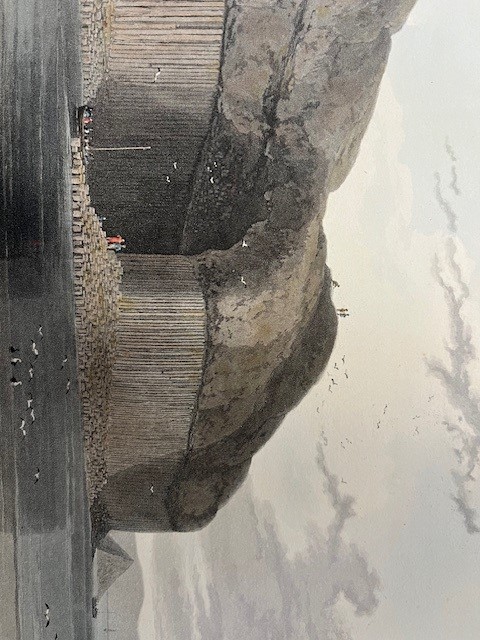
'Entrance to Fingal’s Cave’, in William Daniell, ‘Illustrations of the Island of Staffa’ (1818)
Nor does the colouring in a volume devoted to views in the Grampian Mountains shy away from depicting landscapes in light that suggests that rain is never far away.
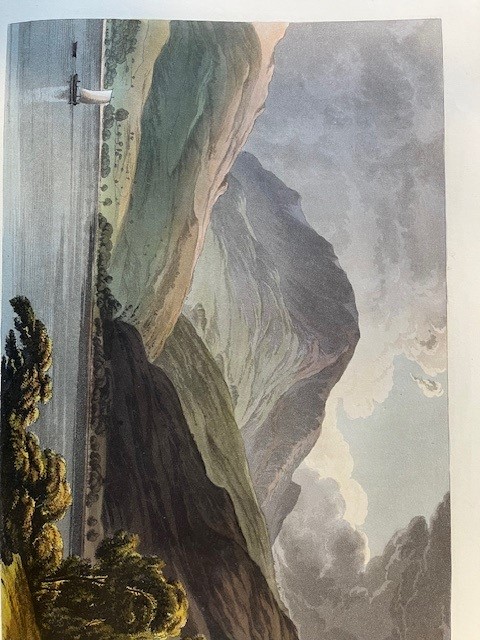
‘Ben Vorlich from the north side of Loch Earn’, in Robson, ‘Scenery’
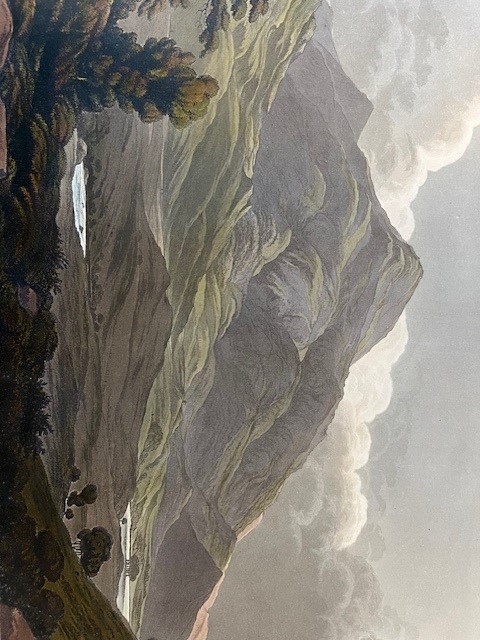
‘Ben More from the north side of Glen Dochart’, in Robson, ‘Scenery’
The special place of water, mobile and potent, is represented in numerous images of the Scottish coastline, whether this is sheer cliffs in Shetland or the distinctive geology of the island of Staffa with its Fingal’s Cave.
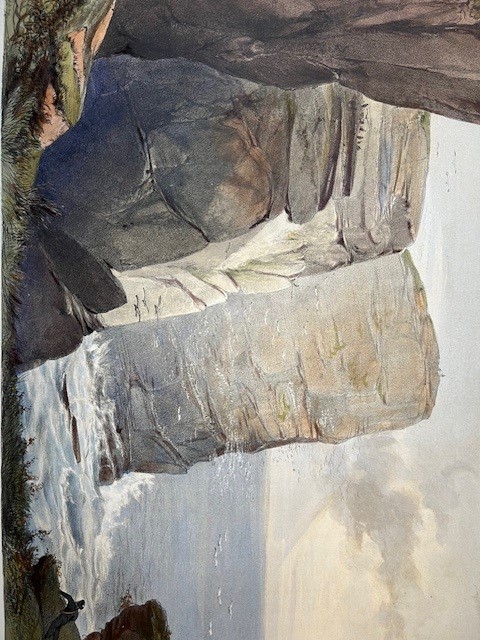
‘Knoop of Noss, Zetland’, in Schetky, ‘Scotch Waters’
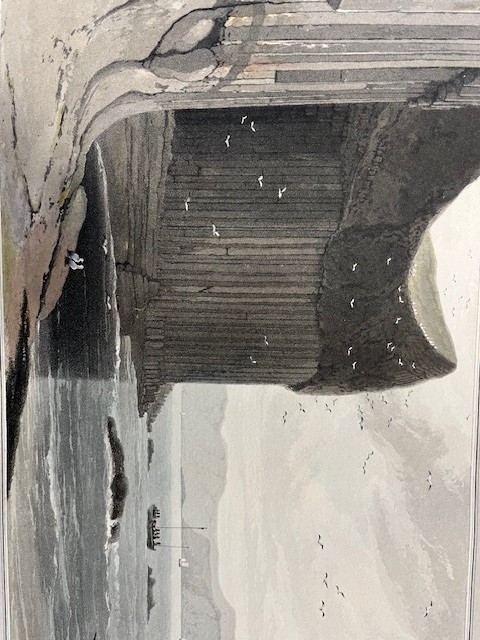
‘Near Fingal’s Cave’, in Daniell, ‘Staffa’
Also part of seascapes are striking natural features like Clett Rock, with flocks of wheeling seabirds, or a picturesquely ruined castle, perched precariously on a beetling crag on the Hebridean island of Raasay.
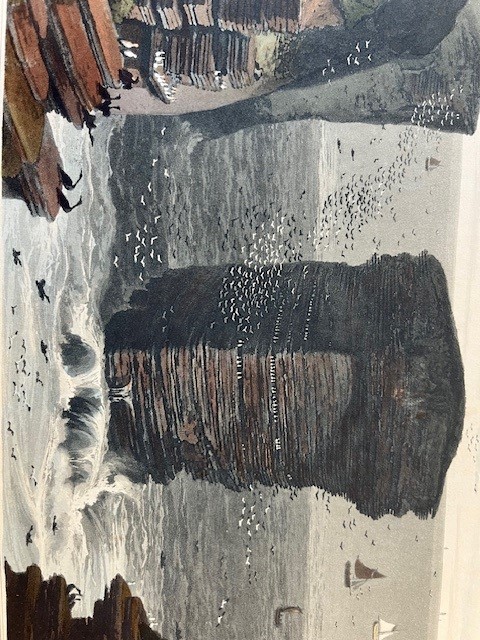
‘Clett Rock’, in Daniell, ‘Voyage’
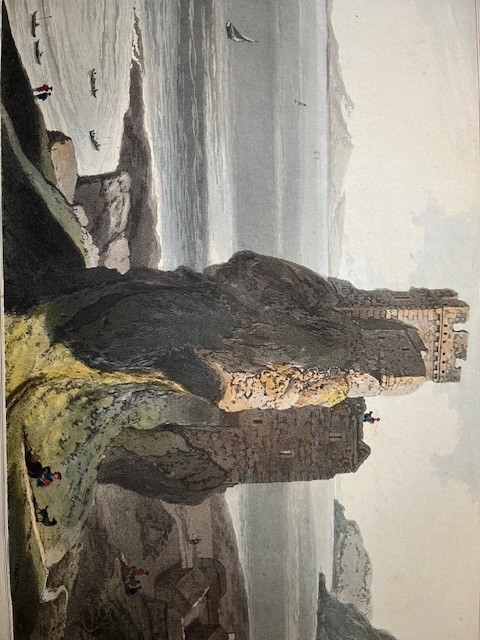
‘Castle Broichin, Raasay’, in Daniell, ‘Voyage’
In these landscapes and seascapes, human figures, where they appear, are dwarfed. But there are other volumes – devoted to customs and costumes, pastimes and employments – where this is reversed, and landscape forms the background to a human focus. Here are Highlanders collecting dulce, a kind of edible seaweed that was a staple of their diet. The accompanying text recalls the hunger and privations of past times of famine, celebrating the mutual support between one member and another that is part of the clan system.
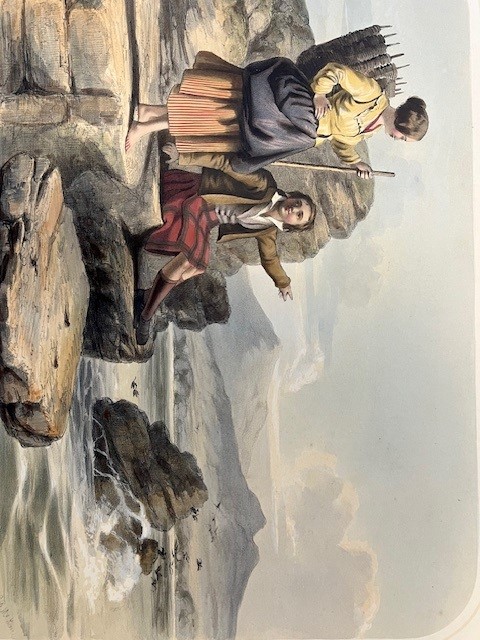
R. R. McIan, ‘Picturesque Gatherings of the Scottish Highlands’ (1848). The title-page promises ‘Picturesque Groups engaged in their social employment, their sports, and pastimes’.
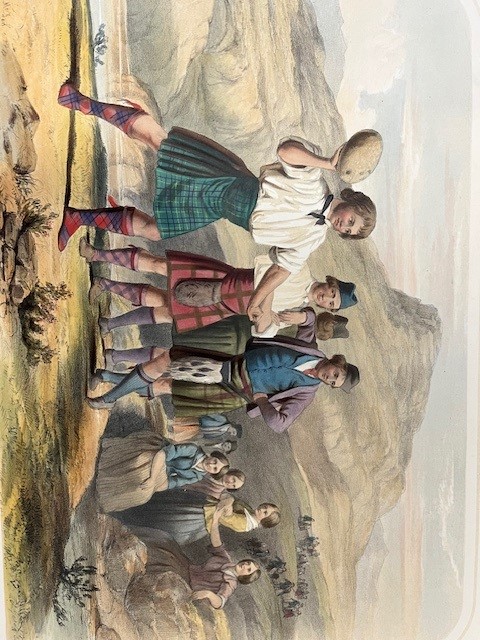
McIan, ‘Picturesque Gatherings’
Here too are young Highland men competing in the sport of throwing the stone, watched by demure young women who are less colourfully dressed and all with identical hairstyles. In the distance people make their way to the gathering, strung out across a Highland path.
Barry Windeatt, Keeper of Rare Books
